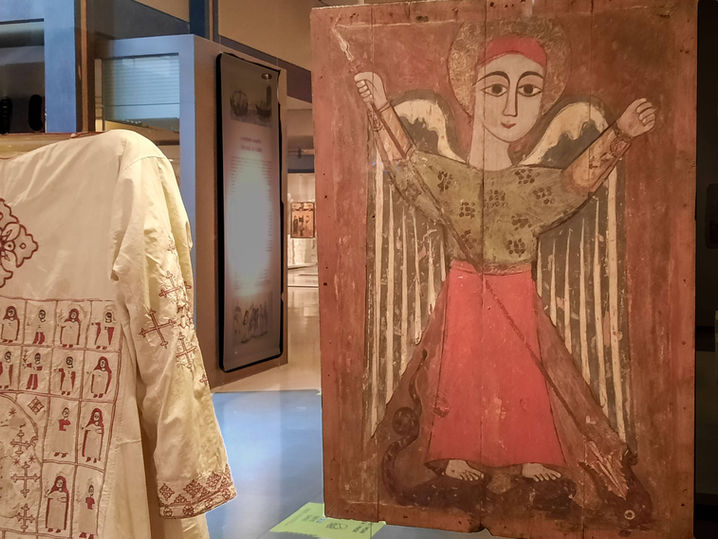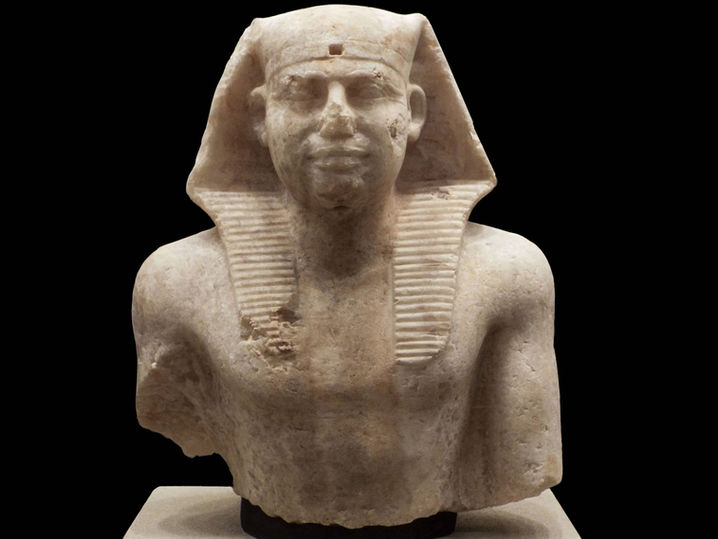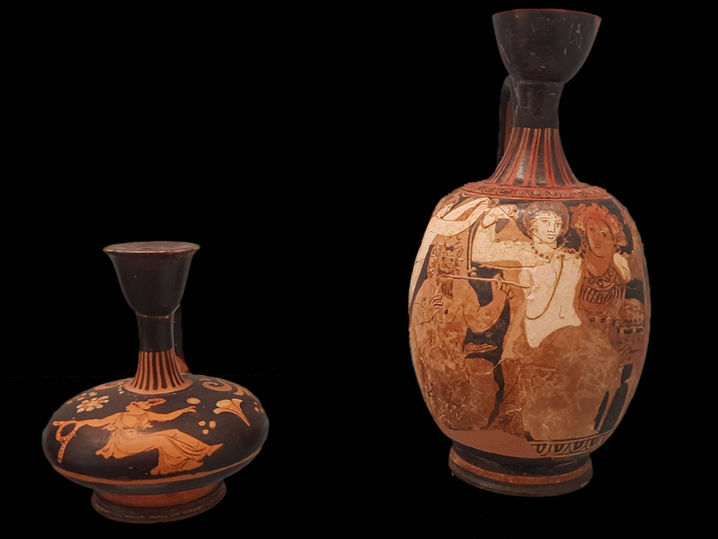After the collapse of Mycenaean civilisation followed a period of chaos, the so-called 'Dark Age'. As from the 11th century BC entire communities of Aeolian, Ionian and Dorian Greeks migrated East and established colonies, respectively in the Northern, Central and Southern parts of Asia Minor. Things remained gloomy in a dangerous world, but there came light: in the late 8th century BC the Greek alphabet was developed from the Phoenician one, for the first time large temples were built instead of humble Bronze Age altars near a tree or a cave, and the beautiful geometric pottery appeared. It was also the time of a new wave of colonisation, this time all over the Mediterranean, in Sicily, on the Libyan coast, in Marseille (Massalia), near Barcelona, on the shores of the Black Sea, etc. The Greeks ruled the waves... (Where else did we hear this?). Strongly organised city-States grew in Sparta, Athens and elsewhere; Sparta with a militaristic society model, Athens gradually working towards a democratic participation of the free, noble and wealthy.
GEOMETRIC & ARCHAIC PERIOD
Taking over and improving pottery techniques from Archaic Korinthos, Athenian workshops had become ’market leaders’ in the Hellenic world as from about 630 BC. They took over the Corinthian black figure style, but replaced the griffins, sphynxes and other species of monstrous creatures by the depiction of human beings, in line with the developing spirit in the ‘Athens of Classical times’: men and women, often in narrative scenes of mythology and legend. By 530 BC red figure pottery made its entry; red figures against a black background offered superior possibility to add subtle details as they could be painted onto the red body surface with black paint. Another 30 years later Athenians also developed a white-background technique, exclusively used for vases with ritual or funerary functions, as the surface painting was far more fragile than the red or black figure techniques. Late in the 5th century BC, however, decorative pottery went into decline, as high demand for murals and frescos in the growing city drew artisans away from the pottery business. By 320 BC Attican pottery production had all but died out.

© 2020.Created by Marc Van den Reeck with Wix.com























